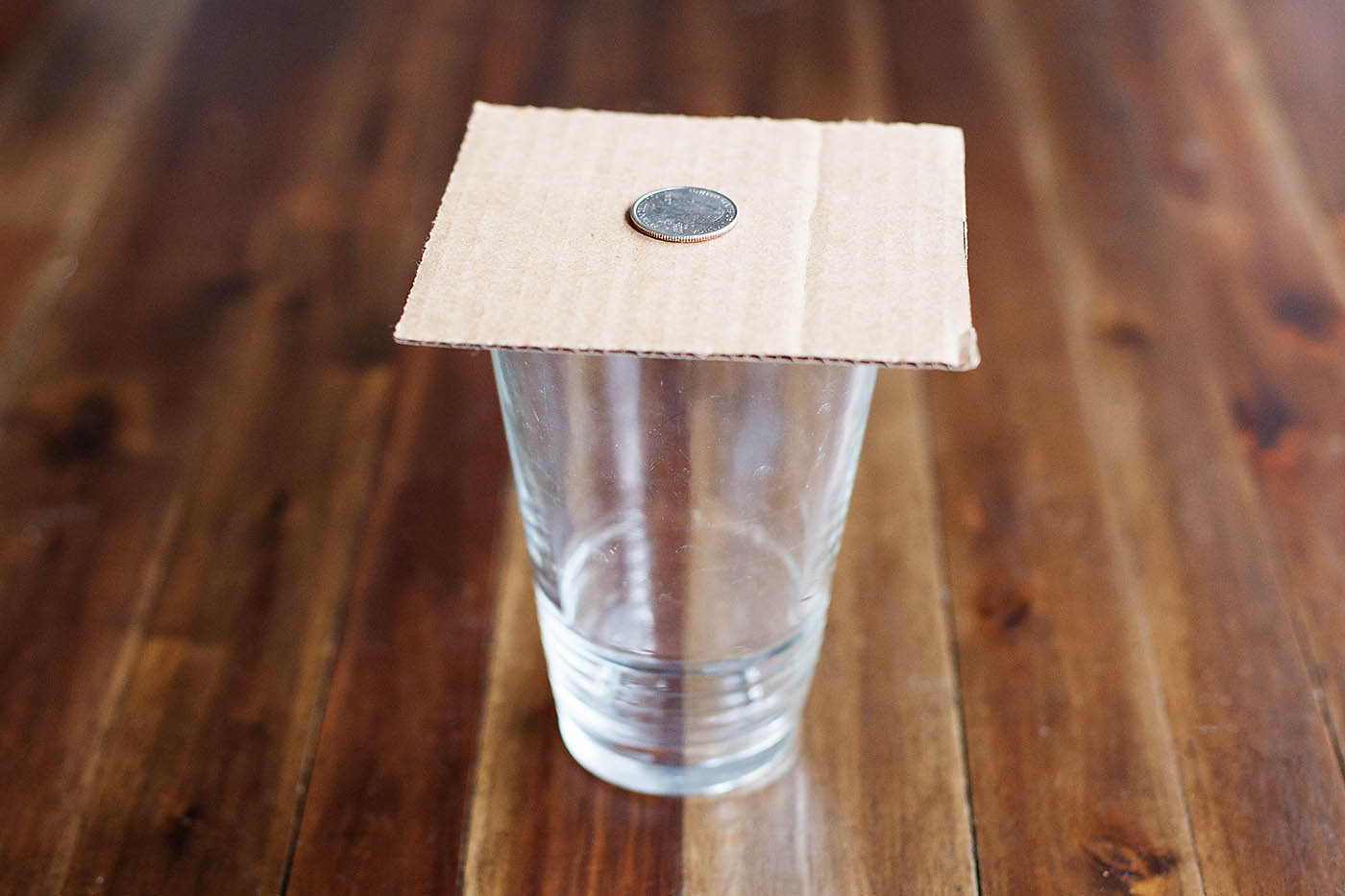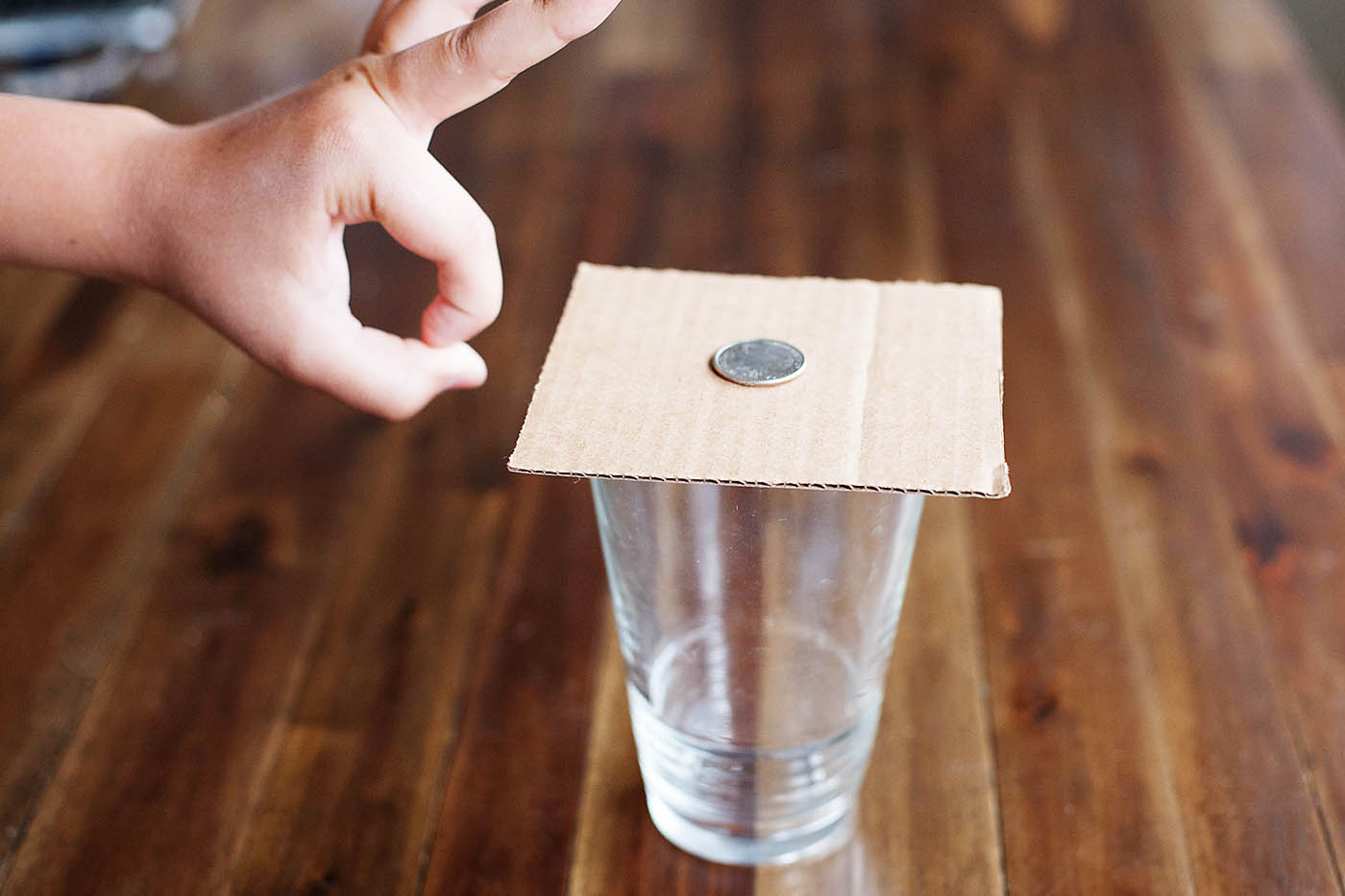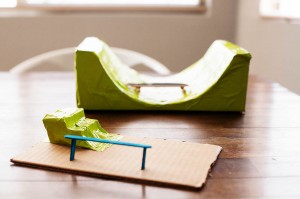We may earn money or products from the companies mentioned in this post. Please see policies for more information.
 Here’s a simple (but fun) trick for the kids! You only need coin(s), a cup and a piece of cardboard.
Here’s a simple (but fun) trick for the kids! You only need coin(s), a cup and a piece of cardboard.
 Place the cardboard on top of the cup.
Place the cardboard on top of the cup.
 Place a coin in the center of the cardboard.
Place a coin in the center of the cardboard.
 Give the cardboard a quick, fairly hard flick.
Give the cardboard a quick, fairly hard flick.
 Watch the coins fall down into the glass while the cardboard keeps going.
Watch the coins fall down into the glass while the cardboard keeps going.
 See how many coins you can stack up!
See how many coins you can stack up!
 Here’s a video of this “trick” in action:
Here’s a video of this “trick” in action:
Related Posts
(Visited 811 times, 8 visits today)











3 Comments
Hey, I love this trick for our science time in preschool, but what is the science behind it?? I see, it says laws of motion but I have no idea what that means…. help! 🙂
Thanks
law of inertia: Inertia is the resistance of any physical object to any change in its state of motion; this includes changes to its speed, direction or state of rest. It is the tendency of objects to keep moving in a straight line at constant velocity. The principle of inertia is one of the fundamental principles of classical physics that are used to describe the motion of objects and how they are affected by applied forces. Inertia comes from the Latin word, iners, meaning idle, sluggish. Inertia is one of the primary manifestations of mass, which is a quantitative property of physical systems. Isaac Newton defined inertia as his first law in his Philosophiæ Naturalis Principia Mathematica, which states:[1] https://en.wikipedia.org/wiki/Inertia
So how would you break down the laws of motion so they’d be relatable to the activity and appropriate age group?